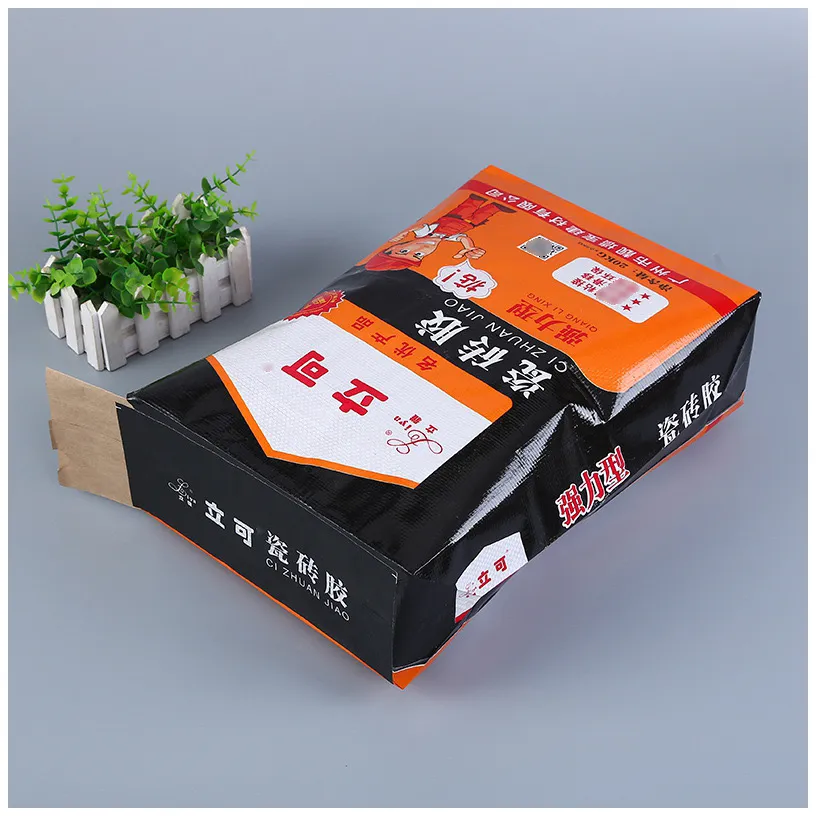
In today’s fast-paced logistics and transportation sectors, effective packaging solutions play a critical role in ensuring that goods are delivered safely and efficiently. One of the standout products in this domain is the Waterproof Woven Bags. These bags offer remarkable protection against moisture and other environmental factors, making them ideal for a wide array of applications. This article explores the various methods that enhance the waterproof properties of these bags and their specific designs tailored for logistics and transportation applications.
Understanding Waterproof Woven Bags
Waterproof Woven Bags are made from high-quality polypropylene (PP) and often feature advanced manufacturing techniques that significantly enhance their moisture resistance. The primary advantage of these bags is their ability to protect contents from water damage, dust, and other contaminants during transit.
Waterproof Woven Sacks and Waterproof PP Bags are particularly useful in sectors such as agriculture, construction, and food packaging. They are designed to provide a robust barrier, ensuring that products remain safe and secure from moisture exposure.
Here’s a quick overview of the specifications commonly associated with various types of waterproof woven bags:
| Product Type | Material | Thickness | Waterproof Rating | Dimensions (cm) | Weight (g) |
|---|---|---|---|---|---|
| Waterproof Woven Bags | Polypropylene | 80-120 μm | High | Customizable | 200-500 |
| Waterproof Woven Sacks | Polypropylene | 100-150 μm | Very High | Customizable | 300-600 |
| Waterproof Poly Bags | Polyethylene | 50-80 μm | Moderate | Customizable | 100-300 |
| Moisture Proof Woven Bags | Polypropylene + PE | 120-200 μm | Extremely High | Customizable | 400-800 |
Methods for Ensuring Waterproof Properties
Several methods are employed in the manufacturing of Waterproof Woven Sacks to enhance their waterproofing capabilities:
- Lamination: One of the most common techniques involves laminating woven polypropylene with a waterproof film. This creates a barrier that prevents water from penetrating the bag while still allowing for some breathability, which is crucial for products sensitive to moisture accumulation.
- Coating: Applying a polyethylene (PE) coating on the inner side of woven sacks can create a moisture-proof layer that effectively protects contents from external humidity. This coating adds to the durability of the bag, ensuring it can withstand the rigors of transportation.
- Seam Sealing: The seams of Waterproof Poly Bags are crucial points for potential leaks. By using heat sealing or ultrasonic sealing methods, manufacturers can ensure that seams are watertight, significantly enhancing the bag’s overall waterproof performance.
- Material Selection: The choice of raw materials also affects the waterproof characteristics of woven bags. Using high-density polypropylene not only improves strength but also enhances water resistance.
Applications in Transportation and Logistics
In logistics, the benefits of Waterproof Woven Bags are evident across various applications, from international shipping to local deliveries. Their design can be optimized to cater to specific logistical needs:
- Agricultural Products: In agriculture, waterproof woven sacks protect seeds, fertilizers, and other supplies from moisture during transit. This is particularly vital for products that are sensitive to humidity, ensuring quality and usability upon arrival.
- Construction Materials: Waterproof woven bags are ideal for transporting cement, aggregates, and other construction materials. Their durability protects against rain and moisture, which can otherwise compromise the quality of these materials.
- Food and Beverage Industry: In the food industry, ensuring product integrity is essential. Moisture Proof Woven Bags help in packaging grains, flour, and other food items, keeping them dry and safe from contamination during transport.
Convenience Features for Enhanced Handling
To optimize the use of Waterproof Woven Bags in logistics, several design features can be integrated:
- Ergonomic Handles: Incorporating sturdy handles on bags facilitates easier lifting and carrying. This is especially beneficial in warehouses or during loading and unloading, enhancing productivity.
- Custom Sizes and Shapes: Offering a variety of sizes and shapes allows for efficient stacking and storage. This adaptability is crucial in optimizing warehouse space and ensuring smooth operations during the handling process.
- Color Coding and Labeling: Implementing a color-coded system or clear labeling on Waterproof PP Bags can streamline inventory management. This helps workers quickly identify products, improving speed and accuracy in warehouse operations.
- Stackability: Designing bags to be stackable can maximize storage efficiency. This is important for warehouse management, as it ensures that space is utilized effectively while also facilitating easy access to stored goods.
- Ventilation Features: While being waterproof is essential, certain products may require some degree of ventilation to prevent spoilage. Incorporating breathable mesh sections into the design of woven bags can provide this balance, allowing for moisture control while maintaining protection against external elements.
Conclusion
The use of Waterproof Woven Bags in the logistics and transportation sectors offers unparalleled benefits in terms of moisture protection and operational efficiency. The combination of advanced manufacturing processes and thoughtful design features ensures that goods remain safe and intact during transit. By addressing the specific needs of different industries—whether it’s agricultural, construction, or food—these bags represent a versatile solution for modern logistics challenges.
For more in-depth insights on the excellence of Waterproof Woven Bags, please visit Waterproof Woven Bags.